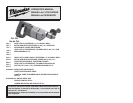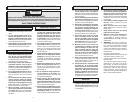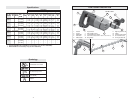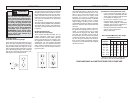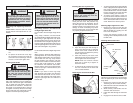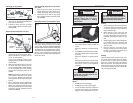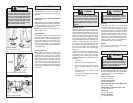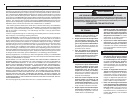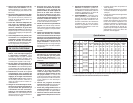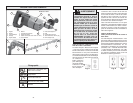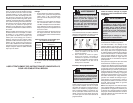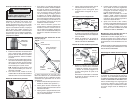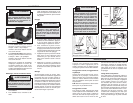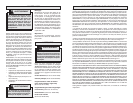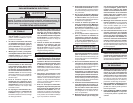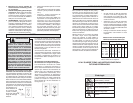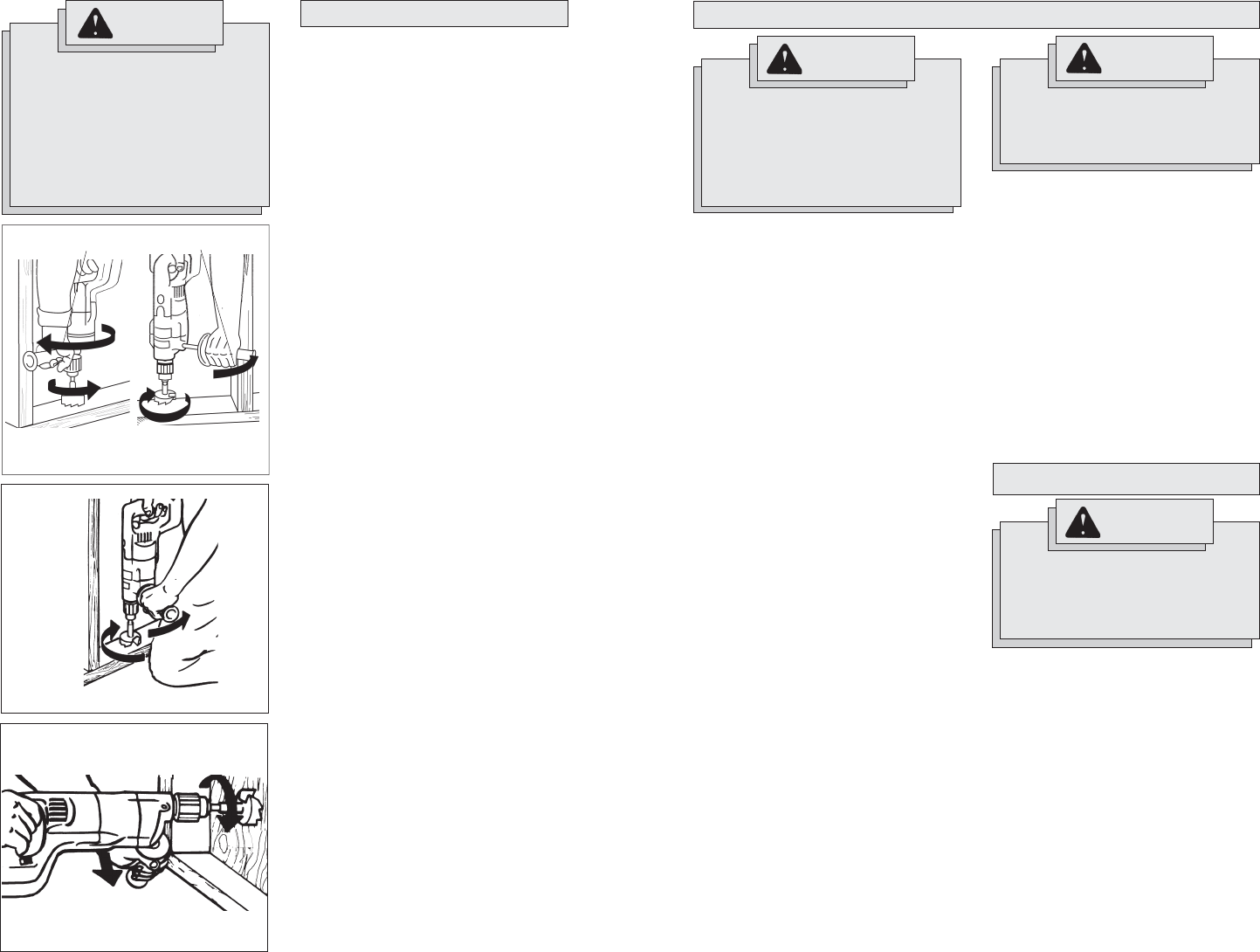
12 13
APPLICATIONS
Selecting Bits
When selecting a bit, use the right type for
your job. For best performance, always use
sharp bits.
Drilling in Wood, Composition Materials
and Plastic
When drilling in wood, composition materials
and plastic, start the drill slowly, gradually in-
creasing speed as you drill. Use low speeds
for plastics with a low melting point.
NOTE: Keep the speed low enough to pre-
vent burning the bit.
Drilling in Metal
When drilling in metal, use high speed steel
twist drills or hole saws. Use a center punch
to start the hole. Lubricate drill bits with cut-
ting oil when drilling in iron or steel. Use a
coolant when drilling in nonferrous metals
such as copper, brass or aluminum. Back
the material to prevent binding and distortion
on breakthrough.
Drilling in Masonry
When drilling in masonry, use high speed
carbide-tipped bits. Drilling soft masonry
materials such as cinder block requires
little pressure. Hard materials like concrete
require more pressure. A smooth, even fl ow
of dust indicates the proper drilling rate. Do
not let the bit spin in the hole without cut-
ting. Do not use water to settle dust or to
cool bit. Do not attempt to drill through steel
reinforcing rods. Both actions will damage
the carbide.
Bracing against the fl oor
reaction
forward
rotation
Fig. 11
Bracing against your leg
forward
rotation
Fig. 10
reaction
reaction
forward rotation
reverse rotation
Bracing against a stud
reaction
Fig. 9
WARNING
To reduce the risk of personal injury,
hold the tool securely. Brace tools
with side handles as shown (Fig. 9,
10 & 11). If the bit binds, the tool will
be forced in the opposite direction.
Bits may bind if they are misaligned
or when breaking through a hole.
Wood boring bits can also bind if
they run into nails or knots.
Maintaining Tools
Keep your tool in good repair by adopting a
regular maintenance program. Before use,
examine the general condition of your tool.
Inspect guards, switches, tool cord set and
extension cord for damage. Check for loose
screws, misalignment, binding of moving
parts, improper mounting, broken parts and
any other condition that may affect its safe
operation. If abnormal noise or vibration oc-
curs, turn the tool off immediately and have
the problem corrected before further use.
Do not use a damaged tool. Tag damaged
tools “DO NOT USE” until repaired (see
“Repairs”).
Under normal conditions, relubrication is not
necessary until the motor brushes need to
be replaced. After six months to one year,
depending on use, return your tool to the
nearest MILWAUKEE service facility for the
following:
• Lubrication
• Brush inspection and replacement
• Mechanical inspection and cleaning
(gears, spindles, bearings, housing,
etc.)
• Electrical inspection (switch, cord,
armature, etc.)
• Testing to assure proper mechanical and
electrical operation
WARNING
To reduce the risk of injury, always
unplug your tool before performing
any maintenance. Never disassemble
the tool or try to do any rewiring on
the tool's electrical system. Contact a
MILWAUKEE service facility for ALL
repairs.
WARNING
To reduce the risk of injury, electric
shock and damage to the tool, never
immerse your tool in liquid or allow a
liquid to fl ow inside the tool.
MAINTENANCE
Cleaning
Clean dust and debris from vents. Keep
the tool handles clean, dry and free of oil
or grease. Use only mild soap and a damp
cloth to clean your tool since certain cleaning
agents and solvents are harmful to plastics
and other insulated parts. Some of these
include: gasoline, turpentine, lacquer thinner,
paint thinner, chlorinated cleaning solvents,
ammonia and household detergents con-
taining ammonia. Never use fl ammable or
combustible solvents around tools.
Repairs
If your tool is damaged, return the entire tool
to the nearest service center.
ACCESSORIES
WARNING
To reduce the risk of injury, always
unplug the tool before attaching or
removing accessories. Use only spe-
cifi cally recommended accessories.
Others may be hazardous.
For a complete listing of accessories refer to
your MILWAUKEE Electric Tool catalog or go
on-line to www.milwaukeetool.com. To obtain
a catalog, contact your local distributor or a
service center.
Quik-Lok
®
cord sets
Cat. No. 48-76-4008
Plastic Carrying Case
Cat. No. 48-55-0802
Ring Clamp Side Handle (for RAD units)
Cat. No. 49-15-0200
Side Handle (for aluminum gear case)
Cat. No. 49-15-0151
Chuck Key
Cat. No. 48-66-3280
Chuck Key Holder
Cat. No. 48-66-4040



